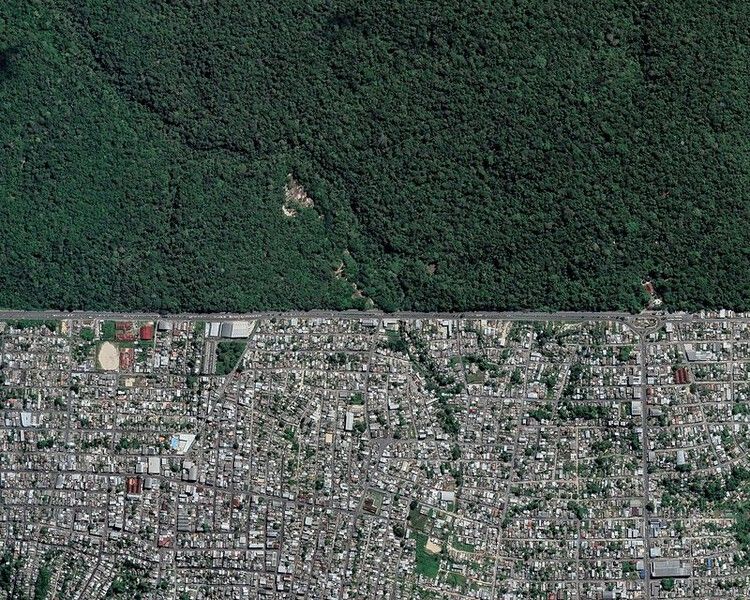To share To share
Or
https://www.archdaily.com.br/br/1015817/cidades-amazonicas-como-e-viver-tao-proximo-da-maior-floresta-tropical-do-planeta
The world is watching the Amazon. Geographic data about this territory, covering 6.74 million km2, spread across eight countries in Latin America, are constantly featured in national and international media. The preferred numbers of materials are always linked to its magnitude as the largest tropical forest in the world, home to 10% of the world’s biodiversity, responsible for 15% of the planet’s fresh water. However, little is said about what happens under its trees, on the ground where people live.



 + 7
+ 7
The urban aspects of the Amazon region are the last to be mentioned when the topic is this portion of the Earth, but understanding the importance of preserving the forest for the survival of the planet also involves caring for the quality of life of its inhabitants.
In the Brazilian Amazon alone, there is a population of 28.4 million people, with an expanding urbanity. Currently, 75% of its population is seen as urban, the vast majority developed in small municipalities with up to 50 thousand inhabitants. This structure, over the centuries, was marked by two important moments: the time when rivers played a fundamental role in the local economy with the extraction of rubber in the 19th century and when, from 1970 onwards, it witnessed the rapid growth of the various villages along the highways opened by the military government.
Related Article
Knowledge from the Amazon applied to contemporary architecture
This story told based on colonization, which had the sole objective of extracting resources, is the weight with which the Amazon region lives. Far from being a story about a sustainable life, based on ancestral understanding, in it, the forest was seen as an obstacle to be overcome. As a result, there is a huge population dispersion, with an average linear distance of 1000 km between their locations, presenting challenges in relation to mobility and access to basic services. Despite being surrounded by fresh water, sanitation and drinking water levels are the lowest in the country, with quality housing and public spaces also restricted to a small portion of the population. Contradictions that culminate in the third largest favela in Brazil, located exactly on the edge of the forest.
How then, is it possible to assimilate the importance of this nature that surrounds them, as essential for the survival of the planet, while their own existence as a person is threatened daily?
Offering a dignified and comfortable life to these communities is essential to foster a sense of belonging and care for everything that constitutes the Amazon. In this sense, despite understanding the deep roots of the problems faced by the Amazonian population, specific actions that understand urbanization and nature as interdependent aspects, and not opposites, can be an important tool for changing course.

This guiding thought allows natural aspects to be seen from a new perspective, generating healthy and reciprocal relationships. The hydrographic network, for example, long neglected to the detriment of road transport, has the capacity to offer valuable opportunities, not only for transport, but also for the creation of quality public spaces with ecological functions in riverside regions, reducing distances and preserving natural resources.

In the architectural sphere, floodable conditions, flat topography and relative proximity to watercourses can direct technological and constructive decisions, focusing on nature-based solutions to produce not only architectures, but also infrastructures (such as drainage and sanitation). ), sustainable and accessible. In this aspect, the indigenous architecture of the region has a lot to teach. The original peoples already understood nature not as a resource to be used, but as part of the community, presenting sustainability by design with the use of materials available locally and respect for the climate.

From straw huts to buildings on stilts, the deep knowledge that riverside communities have about the landscape must also be highlighted. With a practice passed from generation to generation, the two predominant typologies, stilts and floating, are wooden constructions defined based on the precise understanding of the soil, current strengths and flood levels. Although many of them are synonymous with precariousness due to the population’s scarce resources, the potential of the strategy highlights the importance of adaptation and resilience.
This relationship with the context is also addressed, albeit from a different perspective, in contemporary examples which make use of passive air conditioning strategies and the use of local materials, aiming at the essential aspects of construction. Faced with the region’s difficulties, other ways of projecting or recovering the vernacular emerge, generating projects that reflect the local culture.

It is impossible to approach the urbanity of the Amazon without understanding its complexities. A diverse cultural formation, with the presence of indigenous, European and African ethnicities, presents a wealth of strategies that have been refined for many centuries, with those mentioned above being just a few examples. In any case, they serve both to uncover the layers that make up this region and to guide such urgent actions.

The examples talk about the possibilities of creating better architecture and cities using available resources and strengthening the bond between community and nature, turning the appeal not only to the magnitude of the forest, but to the challenges of its people. After all, as anthropologist Romero Ximenes states, the Amazon is not just a natural landscape with exorbitant numbers. A landscape has no ethnicities, no culture, it is just a landscape. The Amazon is people earning a living, producing their existence, therefore, the importance of valuing specific concepts and technologies to guarantee the reproduction and survival, not only of the environment, but also of people.
Tags: Amazon cities live close largest tropical forest planet
--















